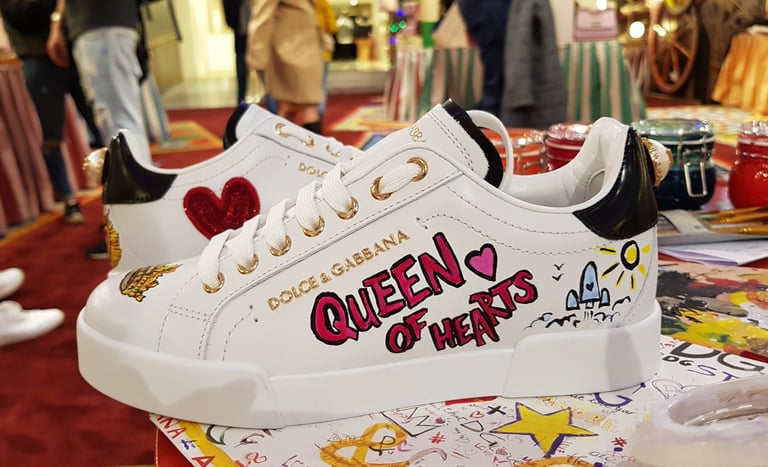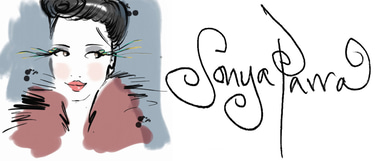In a rapidly digitizing world, the conversation around AI's role in creative industries, particularly fashion, is intensifying. A recent article, "Designed by AI, Claimed by Whom? Fashion's New Legal Dilemma," perfectly encapsulates this evolving challenge. It poses crucial questions about authorship and copyright when algorithms begin to 'design.'
As a fashion illustrator, I find this particularly resonant. While AI offers fascinating possibilities for ideation and efficiency, it sparks a vital discussion: What truly constitutes creativity, and where does human ingenuity fit in? The unique hand-painted stroke, the spontaneous sketch, the nuanced interpretation of a mood – these are not easily replicated. Our hands imbue emotion and narrative in a way that code, for all its sophistication, struggles to emulate.
The legal quandary highlights a deeper truth: the value we place on authenticity and the human story behind a creation. As the lines blur, protecting and celebrating genuine human artistry becomes even more critical. It's a call to champion the irreplaceable touch that defines true craftsmanship and originality in fashion.
The Unseen Hand: Why Human Artistry Still Reigns in Fashion Illustration
In the ever-evolving landscape of fashion, where digital advancements continuously push boundaries, a subtle yet significant counter-movement is gaining traction: the steadfast embrace of hand-painted fashion illustration. While headlines often buzz with the latest AI-driven innovations – and rightly so, as the piece "Designed by AI, Claimed by Whom? Fashion's New Legal Dilemma" provocatively explores – the enduring value of human artistry, particularly in illustration, remains undiminished. Indeed, it's becoming more precious than ever.
The legal questions surrounding AI-generated designs are a fascinating tangent, revealing the inherent difficulty in assigning ownership and creative credit when a non-human entity is involved. If an algorithm churns out a print or a silhouette, where does the 'art' truly reside? This conundrum inadvertently underscores the profound importance of the human element in creative expression. My own work, illustrating at exclusive events like private parties at Claridge's, The Ritz, and The Mandarin Oriental Hyde Park Knightsbridge, for instance, thrives precisely because of this irreplaceable human connection. There’s an immediate, personal interaction, a bespoke interpretation of a moment that an AI cannot replicate. Each stroke captures not just an outfit, but an essence, a fleeting emotion, a conversation.
Consider the "Artwear Explosion" trend, which celebrates hand-painted fashion as the next big thing. This isn't merely a stylistic choice; it's a statement. In an era dominated by fast fashion and mass production, a hand-painted garment or an original illustration becomes a beacon of individuality and conscious consumption. It’s a rejection of the homogenous, a pursuit of the singular. Each piece tells a story of the artist's hand, their vision, their time, and their unique imperfections – qualities that AI, by its very nature, strives to eliminate or simulate rather than authentically possess.
The charm lies in the visible brushstrokes, the subtle variations in line weight, the occasional bleed of colour – these are the hallmarks of human craft. They imbue a piece with soul, character, and a narrative that resonates deeply with an audience seeking authenticity. When an artist collaborates with a fashion house, as seen in the "Alumni Collaborations" news, it’s not just about a design; it's a merging of distinct artistic identities, a conversation between disciplines. These collaborations bring a unique vision and a fresh perspective that pure data analysis, while informative, can never fully conceive.
Moreover, hand-painted illustration often champions sustainability. By creating unique, long-lasting pieces that defy fleeting trends, it encourages a more thoughtful approach to fashion consumption. It's about investing in art that you wear, rather than discarding disposable items. This aligns perfectly with a growing consumer desire for ethical practices and a reduced environmental footprint.
Ultimately, while AI will undoubtedly continue to be a powerful tool for ideation and efficiency in fashion, it will always be just that: a tool. The true spark, the innovative leap, the emotional resonance, and the distinct handwriting that defines compelling fashion illustration will continue to originate from the human mind and the human hand. It is this irreplaceable artistry that will ensure hand-painted fashion illustration remains not just relevant, but increasingly valued, providing a vital counterpoint to the digital age. It's the unseen hand, creating the undeniable magic.


©Image & customisation by Sonya Parra for Dolce & Gabbana
The Human Touch in an Algorithmic World
Hand-Painted Fashion Illustration News
Here are three compelling news stories from the world of hand-painted fashion illustration since June 21, 2025:
1. "Artwear Explosion: Hand-Painted Fashion as the Next Big Thing in 2025"
This piece highlights the resurgence of hand-painted fashion as a powerful form of self-expression and a move towards sustainability. As consumers seek individuality, designers are integrating art directly onto garments, creating unique wearable canvases that stand out from mass production. This trend supports independent artists and challenges fast fashion norms, emphasizing authenticity and personal connection in clothing.
Source: grrlygrrls.com
2. "Designed by AI, Claimed by Whom? Fashion's New Legal Dilemma"
This article delves into the complex legal questions surrounding AI-generated fashion designs, particularly concerning copyright and human authorship. As AI tools become more integrated into creative workflows, the fashion industry grapples with a legal system built on human-created art. The challenge lies in defining where human input ends and AI's contribution begins in the context of intellectual property.
Source: yourfashionlawguide.com
3. "Where Art Meets Fashion: Alumni Collaborations"
Showcasing the enduring appeal of artistic partnerships, this news feature from the Royal Drawing School highlights recent collaborations between alumni artists and iconic fashion houses. Examples include Holly Mills x Burberry, Pollyanna Johnson x Dior, and Alice Shirley x Hermès, demonstrating how hand-drawn illustrations and artistic concepts are being beautifully integrated into luxury collections, celebrating heritage, nature, and craftsmanship.
Source: royaldrawingschool.org
Artistry
Capturing moments in vibrant art at events.
Illustration
Creativity
eventillustratorsjp@gmail.com
+44 7495 985 164
© 2025. All rights reserved.
